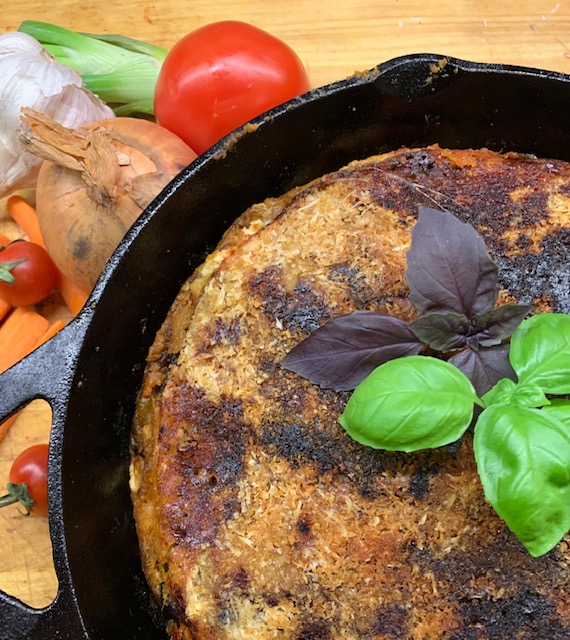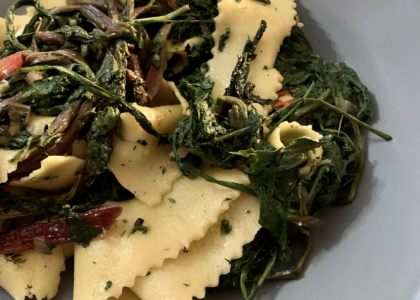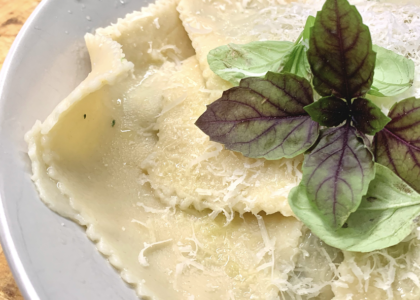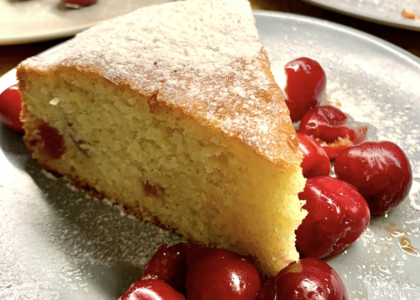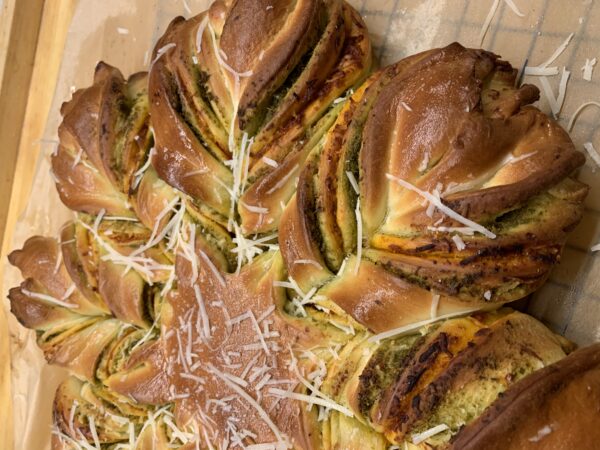Too hot for an oven? Try this inverted take on an old Italian favorite.
In this recent, and quite irregular, heatwave in Central Europe we are having this week, the most remote action I can imagine is running that oven of mine. This weekend, a baked cinnamon walnut coffee cake for a cottage weekend or a savory sun-dried tomato & pine nut bread are the furthest things from my mind. Don’t get me wrong, it takes a lot to say no to one of my favorite quiches but with 35 degree C temperatures, I can put it on the back burner for now – pun somewhat intended.
Yet before we surrender to jambon-beurre baguettes this summer, let’s talk about that back burner while we are here together. Whether you call it a stovetop, cooktop, hob, or range, learn how it can make for a solid plan B during this heat and learn how to transform favorite meals that once required baking into new stovetop specialities.
Lately, and with the help of the amazing YouTube channel called Pasta Grannies out of Italy (that I binged during COVID times), I have been learning the art of homemade pasta, forming delicate shapes, creating creamy fillings, and mastering the fundamentals of Italian sauces (tip 1: it’s time). Although my public love affair with all things French is no secret, these recent times I have been learning new techniques, discovering new tastes through different food pairings, and more overall essentials about home cooking. Self-improvement is wellness for the soul, after all. With COVID, I have been keeping robustly healthy in this regard (but don’t consult my waistline on that quite yet, however).
I heard that one is Sicilian first and Italian second. As we plan out our upcoming road trip through all of Sicily, I wanted to dive in the deep end of what I wanted to taste and see while there. Interesting fact: I learned that up until 60 years ago it was quite common for women to cook meals over open flames outdoors (no ovens were readily available) with a lot of fresh ingredients from their gardens – including eggplant, potatoes, and onions. One, it is far too hot in Sicily during most summer months and second, cooking over an open flame allows you to slow cook and is better control and regulate the heat for certain dishes in the area. For me, it does make sense with the sweltering heat and punishing summer if you’re up north and have noodle-white skin. Cooking meals al fresco even means spending more time with loved ones, eliminating worry for a few hours to go off and visit a neighbor, or attend a gathering while it simmers away.
Heatwaves, stove top, in-season vegetables, & Sicily, I think it is coming together for us to hop to.
This is a recipe for an inverted eggplant parmigiana that is adapted from Pasta Grannies with my own take on ingredients and cheese. (Nona would not approve for letting food turn and go to waste. See: sin). What was adapted — for example, I used both eggplant and ripe zucchini in my layering (not only eggplant) and had ricotta on hand so I substituted with this and swapped out the traditional, nutty Emmental cheese. Other updates is that I prepared this meal in my 2 Hungarian cast iron skillets (you can use 1) instead of a regular, non-stick frying pan.
This dish requires a few steps so, like most Italian cooking, reserve a solid 90 minutes or more of this. For the sauce, that should take 3 or more hours to slowly develop and evolve in flavor. If you don’t have the time, bookmark this page and come on back to learn. Italian cooking, like most cooking, works on the principle that good food takes time.
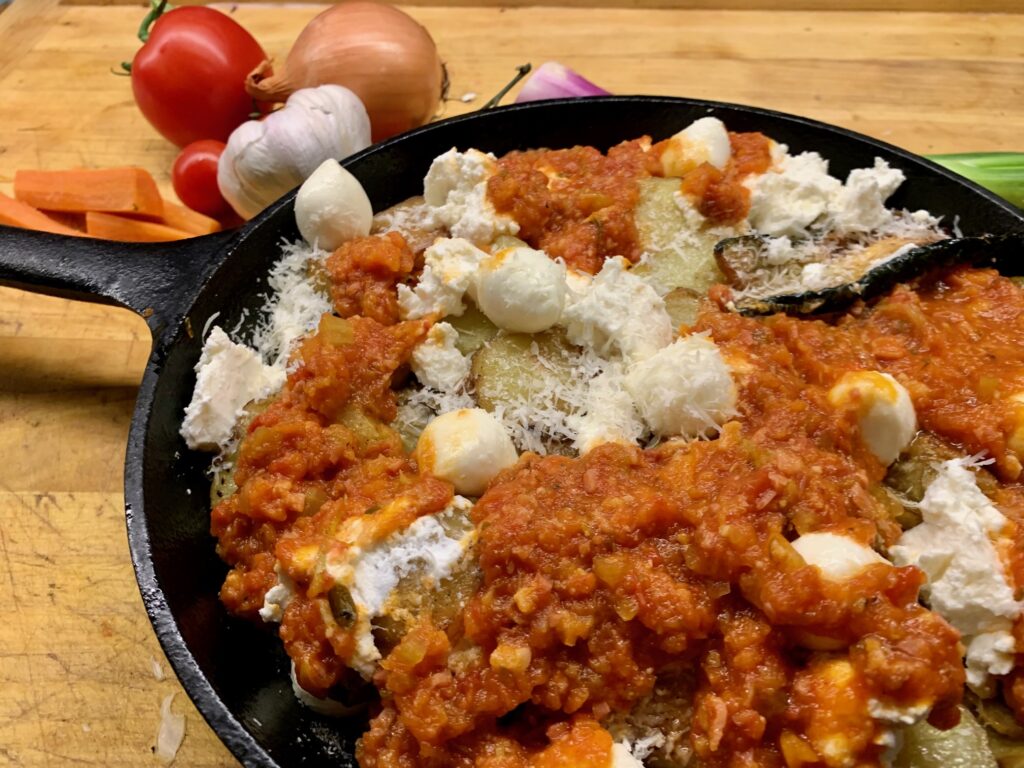
First: Your Homemade Sauce
What you’ll need:
- 1 large yellow onion – diced
- 4 fresh carrots – diced
- 4 stalks fresh celery – diced
- Pancetta – 100g (this is optional)
- 1 jar passata sauce
- 1 can quality chopped tomatoes (or use your garden fresh)
- 1 tbsp of tomato paste
- 2.5 cups water
- Proper handful of fresh green Genoa basil leaves
- 4 garlic cloves – chopped
- Sachet of oregano, thyme, rosemary, & marjoram
- 1/2 cup quality dry white wine
- Freshly cracked black pepper and 2 tsp salt
- 2 tbsp white sugar to balance acidity
To create: on medium heat, sauté onion, carrots, celery, and garlic until tender in olive oil. Add wine and reduce until evaporated. Add remaining ingredients (no sachet) and bring warm to temperature on medium. Once warm, reduce to the lowest setting, add sachet, and cover for 3-4 hours – stirring as needed. The sauce is ready when it is a deep red hue. To finish, remove sachet and add sauce into either a blender or run though a food mill. (I used my mill). Taste and correct seasonings custom to your buds – either adding sugar, salt, or pepper for balancing.
Second: Prepare the Dish
What you’ll need:
- 2 fresh, ripe eggplants – sliced long ways, medium thick, with skins on
- 2 medium size green zucchini – sliced long ways, medium thick, with skins on
- 6 medium size potatoes – peeled and sliced crossways, appx 1.5cm (1/2 inch)
- Olive Oil
- Grated Pecorino cheese, fresh mozzarella & Ricotta cheese
- Breadcrumbs
Cut your eggplant, zucchini, and potatoes and divide onto 3 plates. Sprinkle salt to draw moisture out and leave for 10 minutes. Pat dry with towel before frying. In your fry pan, fry all ingredients in small batches and remove when browned. Place on plate with paper towel to absorb excess oil. Clean fry pan with paper towel and coat bottom of the pan with a bit of olive oil, breadcrumbs and Pecorino. Add a layer of eggplant, then a layer of potato, then a layer of zucchini. Add spoons of sauce (do not pour sauce over, it won’t fry to keep the shape) and scoops of ricotta and mozzarella. Repeat until ingredients are used up or your fill up most of your pan.
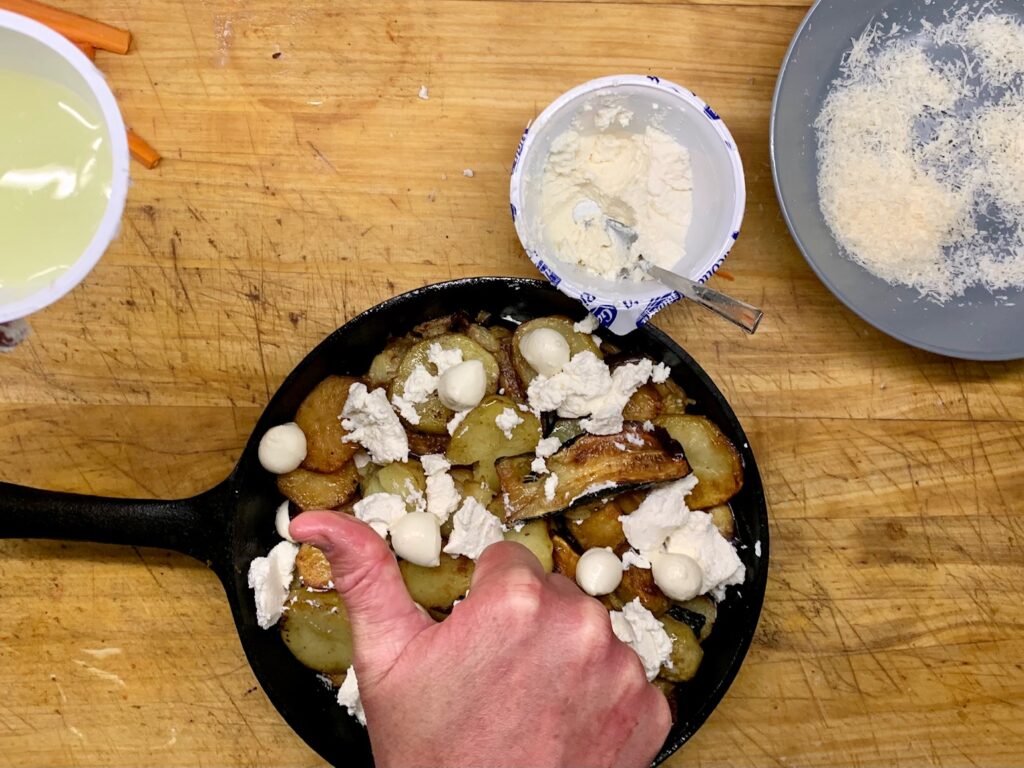
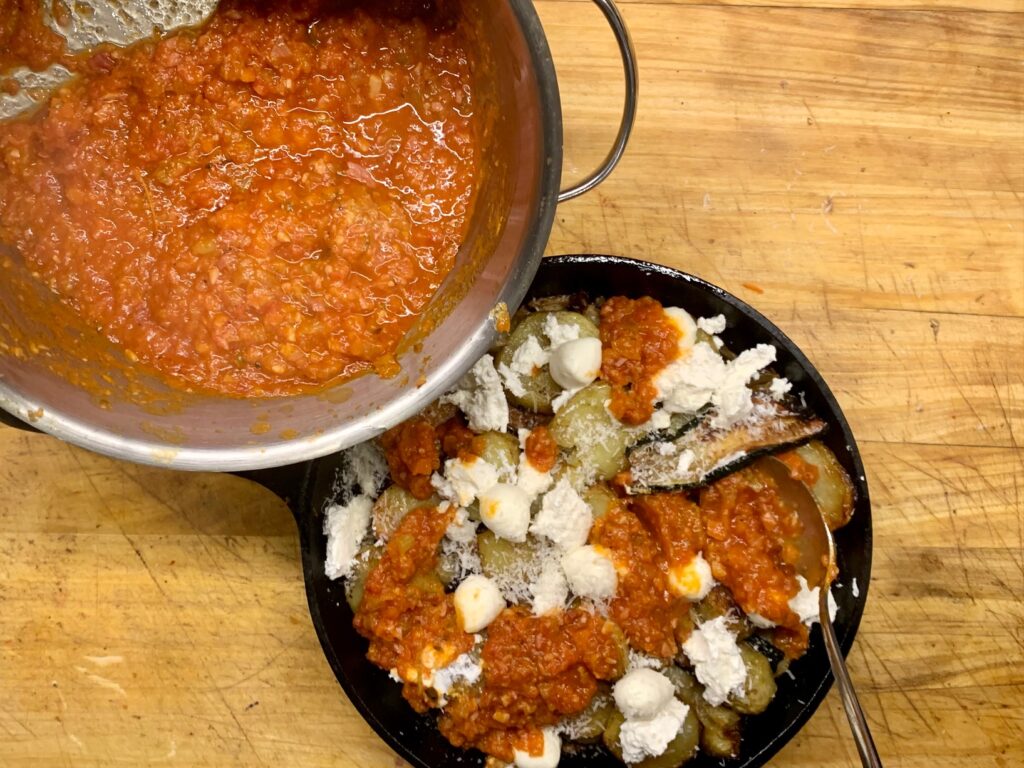
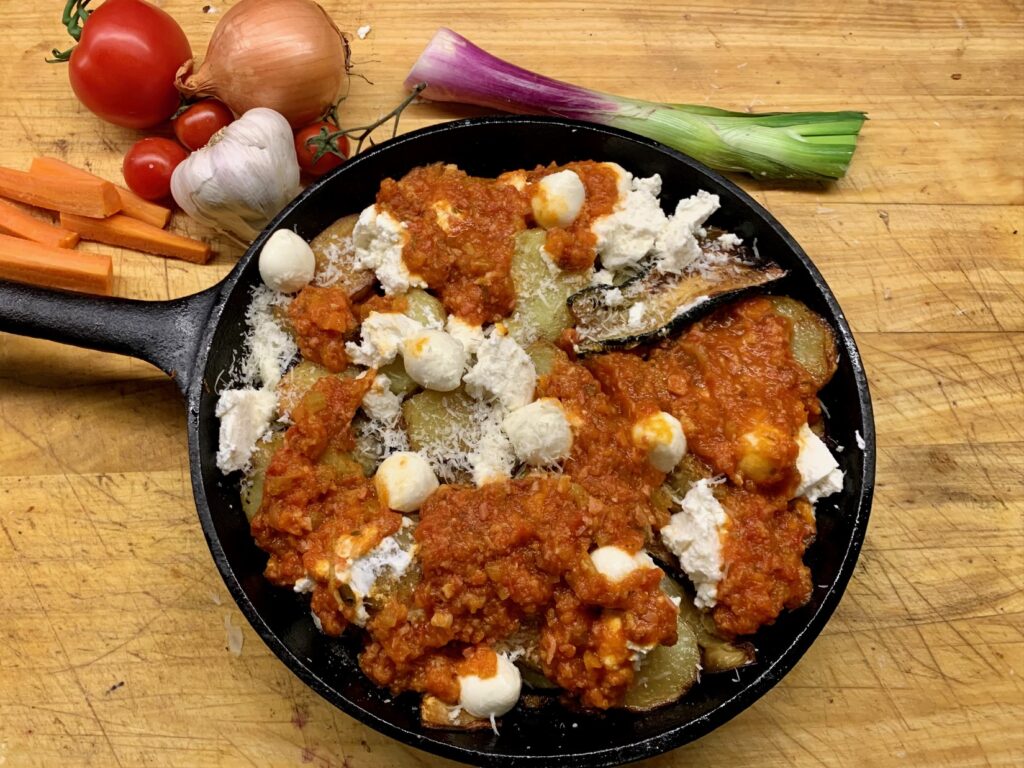
To Finish:
Place on medium to low heat with only a little oil (too much oil and it will be soggy) and begin to cook until a crust is formed on the bottom of your pan (this is done uncovered). You will know it is ready when you can slide it like an omelette back and forth and it keeps shape – appx 12-15 mins. Next you can invert 2 ways and choose what is comfortable for you. 1: slide the dish out onto a plate, remove any burned cheese or breadcrumbs. Add small oil, dust with breadcrumbs and Pecorino again then place your fry pan over plate and flip. 2: same process but use a second prepared skillet or fry pan and flip it right over into a new pan – no plate required. To finish: on medium low heat, create a second crust and add breadcrumbs to the side as needed so as to close the edges. Use a plastic spatula so you don’t break the shape. Once bubbling and cheese begins to ooze out – you are done and ready to serve.
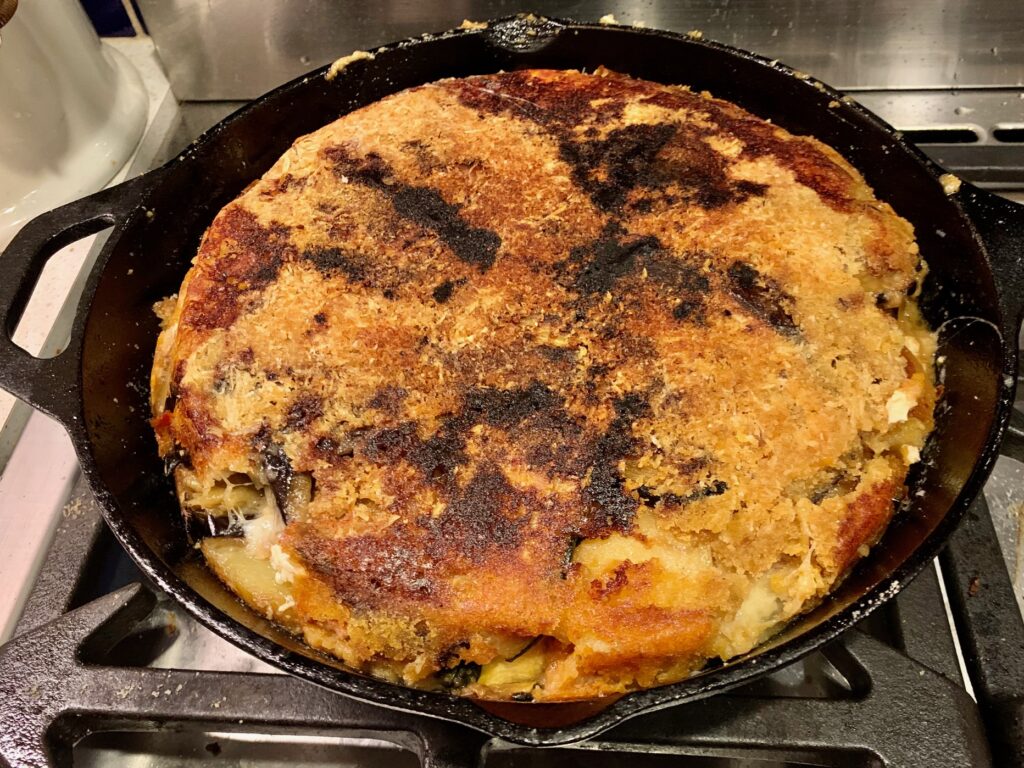
To Serve:
Serve either hot with a basil garnish and a good showering of Pecorino cheese. Add a side bowl of your sauce. Or, serve cold or room temperature making for an excellent and refreshing summertime lunch – outside or in. A generous side green salad and freshly-toasted bread makes for refreshing finishing touch. Serves 6-8.
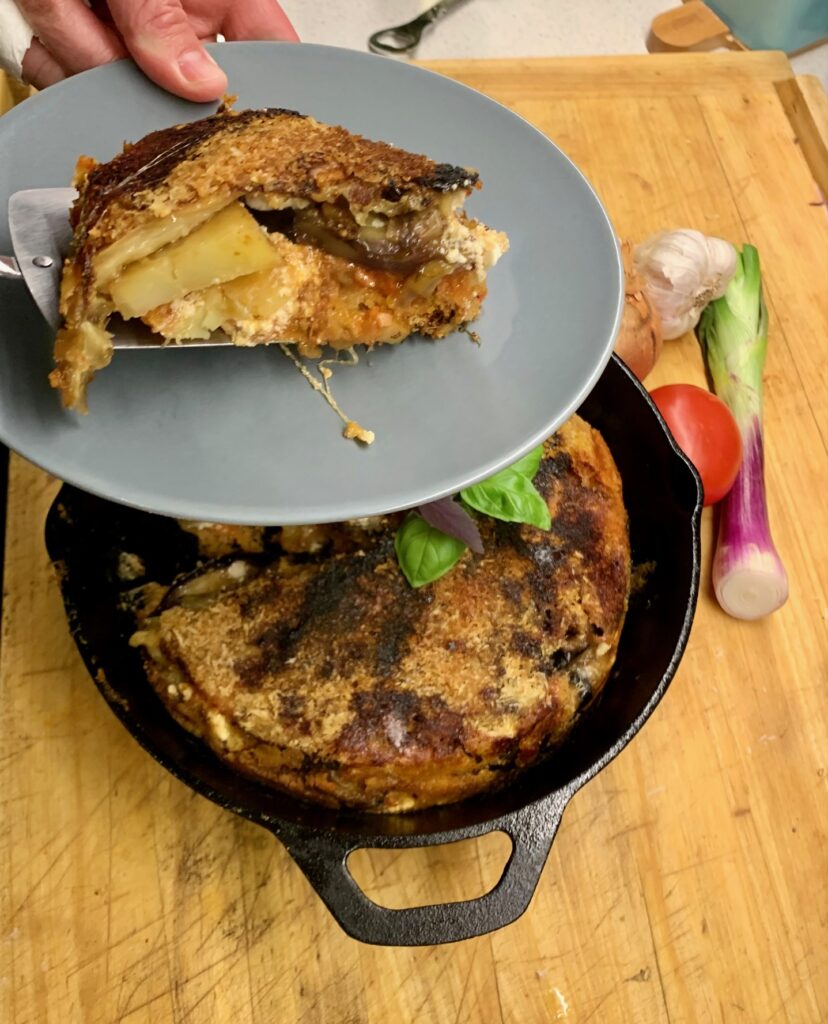
Notes:
- Using potatoes will help keep and give the dish shape. If you omit them, it will be a watery, rather shapeless soup.
- Peeling your eggplant and zucchini will make them lose shape and fall apart – keep the skins on.
- Don’t fry wet vegetables – make sure you draw out with salt and pat dry with a paper towel before preparing.
- When inverting, do this away from the burner flame as to avoid a fire from the oil. Also, even if the flame is off, avoid oil drops on your stovetop. Over a sink will serve just fine and is the best way to stay safe.

